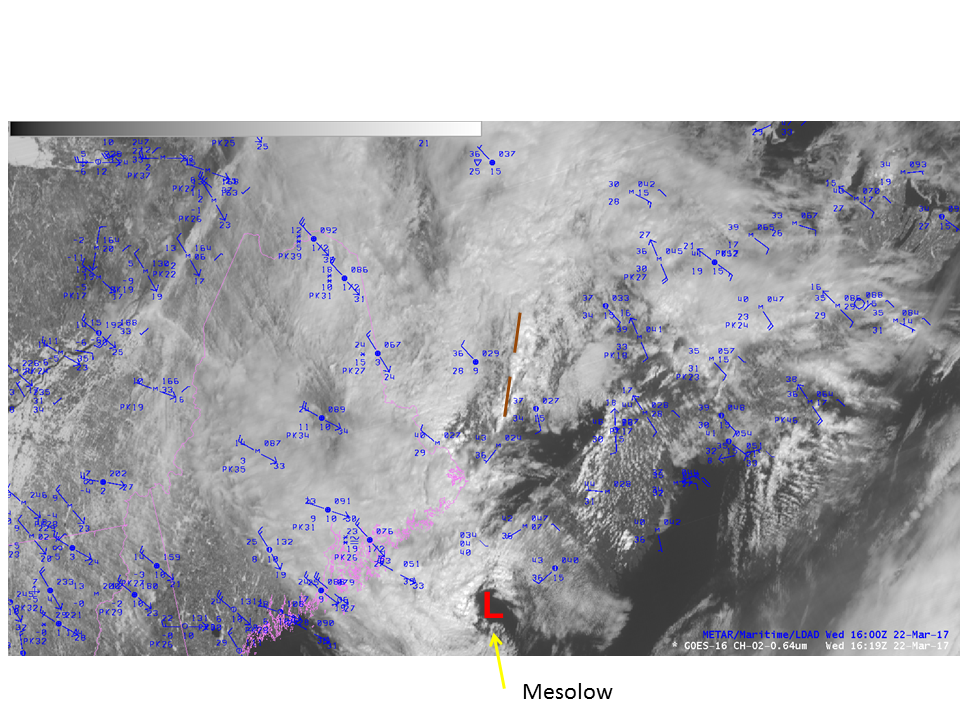The GOES-16 data posted on this page are preliminary, non-operational data and are undergoing testing. Users bear all responsibility for inspecting the data prior to use and for the manner in which the data are utilized.
By Ed Szoke and Dan Bikos
On 22 March 2017 the GOES-16 visible band at 0.64 micron over Maine and southeast Canada shows many different cloud motions across different scales:
We identify some of these on the following image with 1600 UTC METARs overlaid:
The mesolow can be seen in the animation entering the scene and moving northeastward. This mesolow is likely along a cold front with the synoptic surface low to the north over New Brunswick. The brown dashed line above corresponds to a line of convection seen in the animation, this line is along the cold front moving eastward. Ahead of the cold front in the warm sector we observe wave clouds over Nova Scotia early in the loop that transition to unstable cloud streets followed by convection. Over north central Maine, we observe clouds at different heights. There are higher level clouds moving northward ahead of the upper-level trough, meanwhile underneath those clouds we see low-level banded clouds moving relatively quickly to the southeast (in low-level cold advection).
The cloud heights can be more easily identified by looking at multiple channels on GOES-16. In this 4-panel:
We are looking at 0.64 microns (Band 2 / visible) in the upper-left, 1.6 microns (Band 5 / snow / ice) in the upper-right, 1.38 microns (Band 4 / cirrus) in the lower-left, and 0.87 micron (Band 3 / veggie) in the lower-right.
Note the discrimination between low (liquid) versus high (ice) clouds for the following bands:
1.6 microns: High (ice) clouds appear darker / gray and low (liquid) clouds appear lighter (white).
1.38 microns: High (ice) clouds appear lighter (white), whereas low (liquid) clouds are much more subtle and may appear dark.
The 0.87 micron (veggie) band is useful here in that Nova Scotia shows up much more clearly compared to the 0.64 micron (visible) band since vegetation surfaces have high reflectance and water surfaces have low reflectance at this wavelength.

